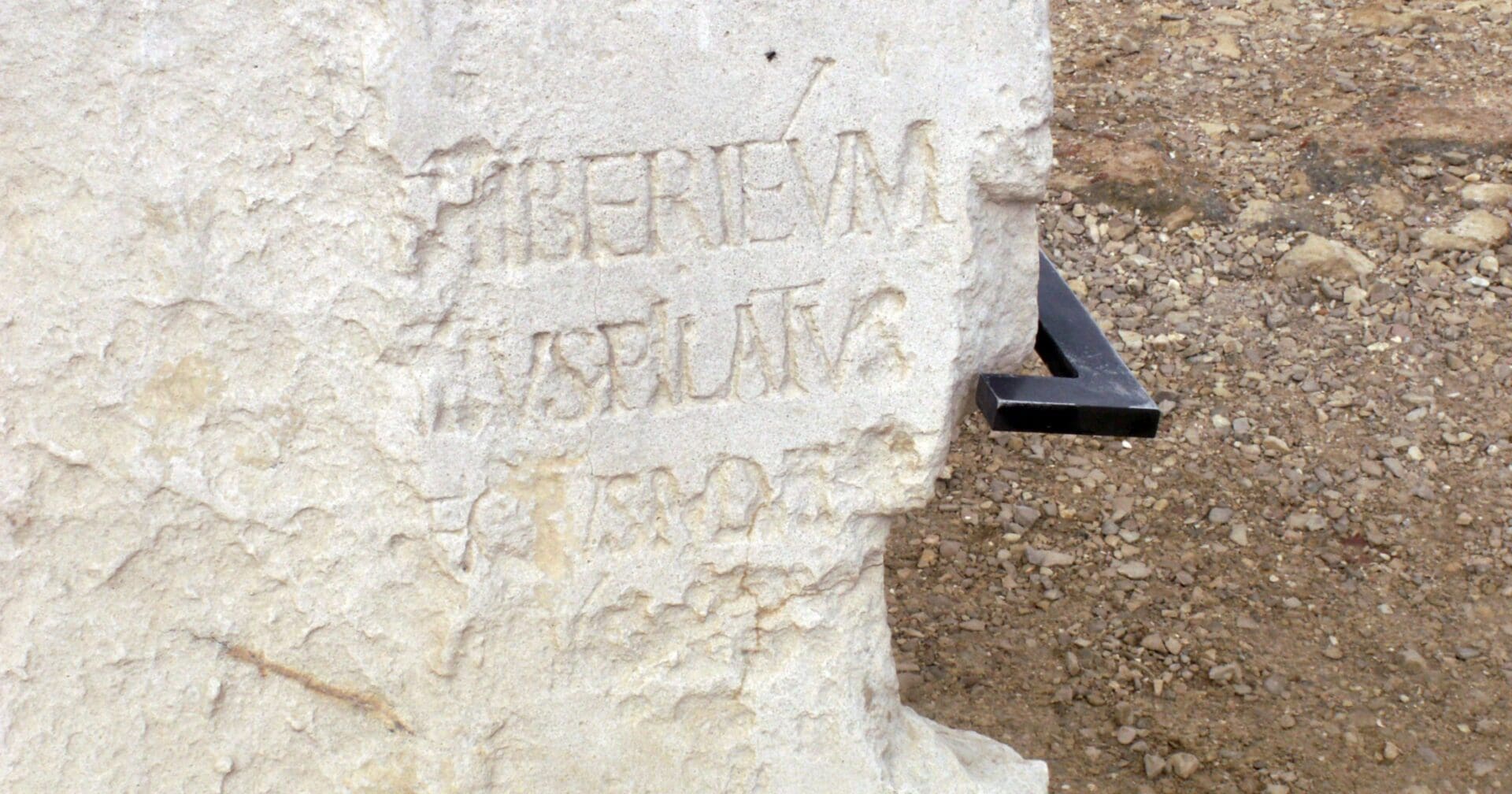Everyone who has read the Gospel is familiar with the larger-than-life character that presided in praetorium following the Sanhedrin trial of Jesus. This man was Pontius Pilate, the Roman prefect ruling over Judea who found Christ guilty of no crimes but allowed Him to be carried to His death regardless.
“A chastity or honesty, or mercy, which yields to danger will be chaste or honest or merciful only on conditions. Pilate was merciful till it became risky.” – C.S. Lewis
Until just under sixty years ago, almost all of what we knew about Pontius Pilate came from Gospel accounts in the New Testament, with very little secular evidence leading to some questioning the historicity of the prefect’s existence. That is, until in June of 1961 a team of Italian archaeologists discovered the first surviving artifact attributed to Pilate.
Dr. Antonio Frova and his team were excavating an ancient Roman theatre in Caesarea, Israel built by decree of King Herod around the year 10 B.C when they discovered the Pilate stone, a piece of carved limestone inscribed with the name of Pontius Pilate. Pontius Pilate made his base of operations at Caesarea, a city that had replaced Jerusalem since the year 6 A.D. as the administrative capital of Judea.
The block is a damaged fragment of the dedicatory inscription of a temple constructed in honor of the Emperor Tiberius who reigned from 14 – 37 A.D., lining up with Pilate’s rule as governor from 26 – 36 A.D. The discovery of the stone proved to be the first authentic archaeological evidence for the historicity of Pontius Pilate, contemporary to his lifetime and aligning with what is known of his career. The partial inscription reads:
To the Divine Augusti [this] Tiberieum
…Pontius Pilate
…prefect of Judea
…has dedicated [this]
In addition to the stone, there are various secular sources from the era mentioning Pilate – even in association with Jesus. Flavius in Antiquities of the Jews circa 94 A.D. mentions Pontius Pilate, along with Philo of Alexandra describing his “furious temper” in On The Embassy of Gauis. Publius Cornelius Tacitus, one of the most well-known Roman historians wrote in Annals the year 116 A.D.
“Christus, from whom the name had its origin, suffered the extreme penalty during the reign of Tiberius at the hands of one of our procurators, Pontius Pilatus“
Today, the Pilate stone resides in the Israel Museum, adding conclusive evidence along with textual accounts to the historicity and existence of Pontius Pilate, the man under whom Christ suffered and was crucified.
Photo credit: Marion Doss via Flickr

















Fascinating! Thank you for the information which gives hope to this fallen world.
Pilate ended his carreer of roman prefect in France, in “Saint Bertrand de Comminges” named in the Christ’s times “LugdunumConvenarum”
[…] de Pilatos como prefecto de Judea, además del tiempo en que estuvo en su cargo. UCatholic señala que hay varias otras fuentes seculares que mencionan al prefecto, como los […]
[…] la posición de Pilatos como prefecto de Judea, además del tiempo en que estuvo en su cargo. UCatholic señala que hay varias otras fuentes seculares que mencionan al prefecto, como los escritos de […]
[…] Ucatholic.com spiega che Pilato aveva la sua base operativa a Cesarea, che sostituì Gerusalemme come capitale amministrativa della Giudea nel 6 d.C.. […]
possibile leggere in italiano?
Nice post. I was checking constantly this blog and I am impressed!
Extremely useful info specifically the ultimate section 🙂 I handle
such information a lot. I used to be looking for this particular info for a
long time. Thanks and best of luck.
[…] romain à Césarée, en Israël, construit par le décret du roi Hérode, vers 10 avant JC. UCatholic.com explique que Pilate exerçait ses fonctions à Césarée, ville qui a remplacé Jérusalem en tant […]
[…] Roman theatre in Caesarea, Israel, which was built by the decree of King Herod, around 10 BC. UCatholic.com explains that Pilate had his base of operations in Caesarea, which replaced Jerusalem as the administrative […]
[…] Roman theatre in Caesarea, Israel, which was built by the decree of King Herod, around 10 BC. UCatholic.com explains that Pilate had his base of operations in Caesarea, which replaced Jerusalem as the […]